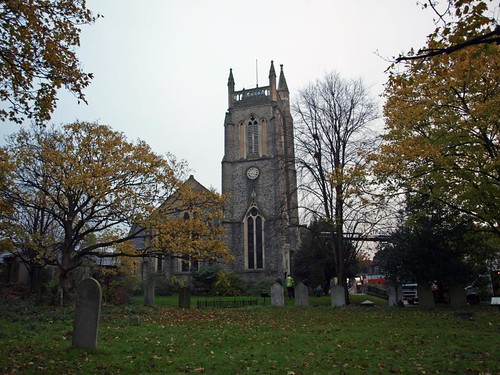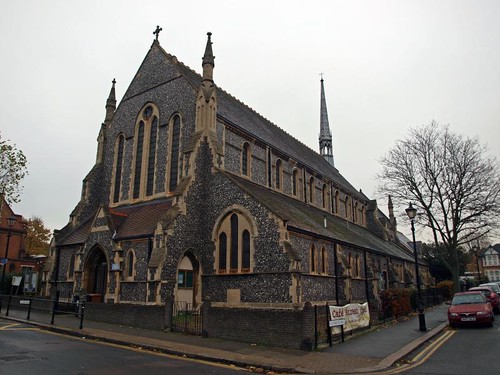ST JOHN THE BAPTIST, High Road. 1832—3 by Blore. Yellow brick, Neo-E.E. Altered in 1893 and again in 1902 etc. Wide airy interior with quatrefoil piers. No furnishings or monuments worth mentioning. - PLATE. Set of 1778-9.
ST COLUMBA, Jansen Road. 1894 by E. P. Warren, now a shell. A good red brick Neo-Perp church with W baptistery and a small SE turret.
Leyton, which has brought Leytonstone within its bounds, has had a delightful mace made for the new borough, modelled on one made for the House of Commons in the time of the Stuarts; it is 48 inches long.
Leytonstone has a Roman milestone still standing, and its name comes from it; it gives the distance from London to Epping. There are several 19th century churches, St Andrew’s built by Sir Arthur Blomfield, and St John's built largely through the enthusiasm of William Cotton, the bank director who lies in it. It is a white brick structure with stone dressings, a pinnacled tower, and a graceful spire. Its first vicar was a friend of David Livingstone, who came to stay with him on the eve of his journey to Africa. Here he received his last Communion from his friend before sailing for the Dark Continent on a mission which was to bring light to a thousand dark places and to him everlasting fame.
Flickr.
Leytonstone has a Roman milestone still standing, and its name comes from it; it gives the distance from London to Epping. There are several 19th century churches, St Andrew’s built by Sir Arthur Blomfield, and St John's built largely through the enthusiasm of William Cotton, the bank director who lies in it. It is a white brick structure with stone dressings, a pinnacled tower, and a graceful spire. Its first vicar was a friend of David Livingstone, who came to stay with him on the eve of his journey to Africa. Here he received his last Communion from his friend before sailing for the Dark Continent on a mission which was to bring light to a thousand dark places and to him everlasting fame.
Flickr.



No comments:
Post a Comment